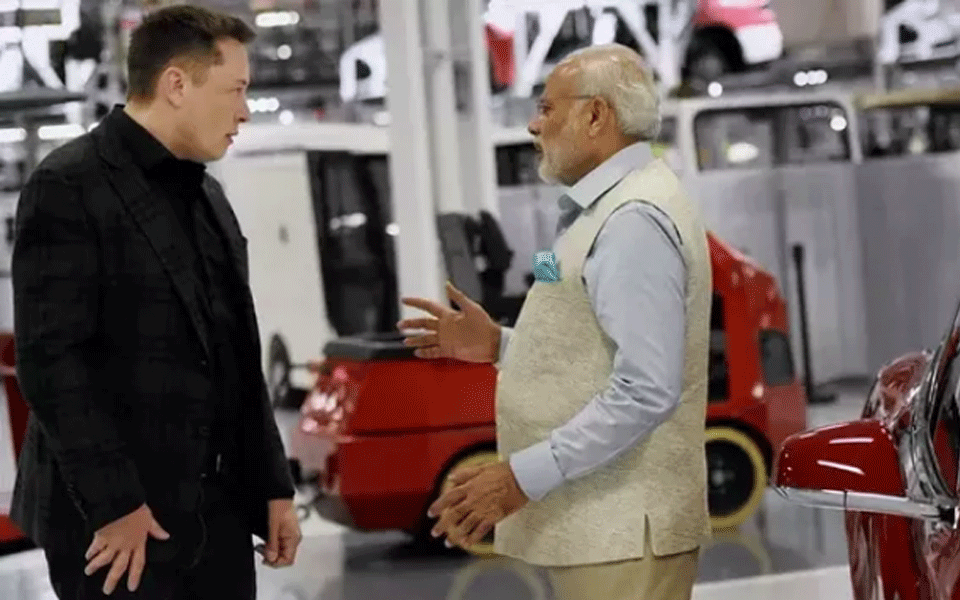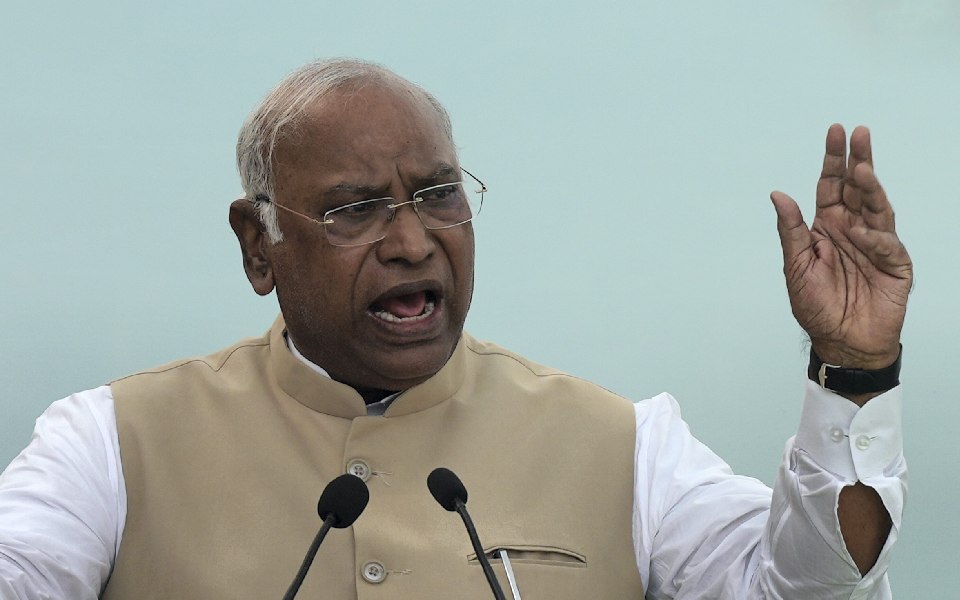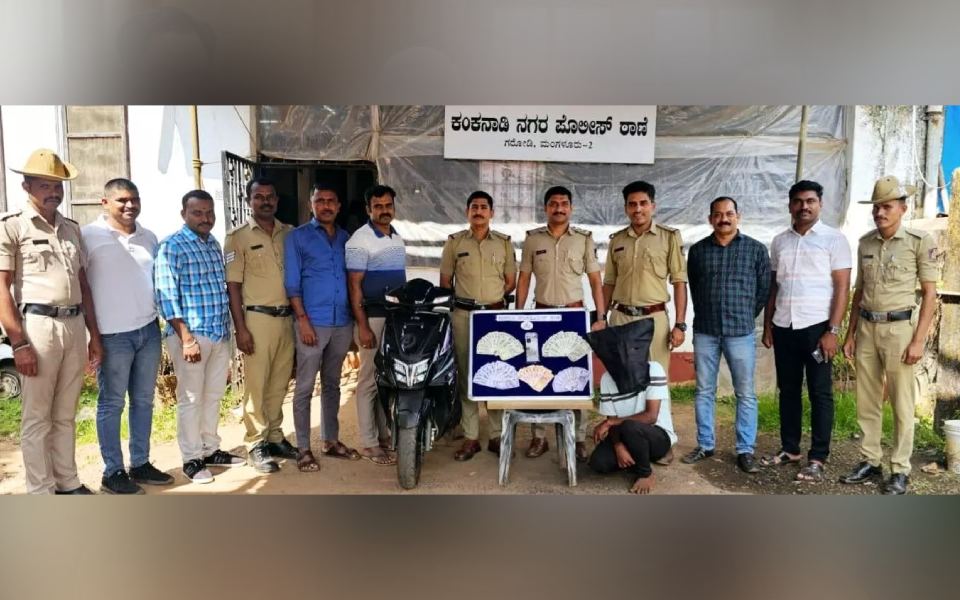New Delhi, May 30: Tesla CEO Elon Musk said on Wednesday that he would love to roll out Tesla electric cars in India but the tough government regulations have forced him to apply the brakes on his plans till date.
"Would love to be in India. Some challenging government regulations, unfortunately," Musk tweeted in a response to a Twitter user who wrote "No Tesla in India" on his Twitter handle.
"Deepak Ahuja, our CFO, is from India. Tesla will be there as soon as he believes we should," added Musk, also the SpaceX founder.
Ahuja, a seasoned auto industry finance executive with 15 years’ experience at Ford Motor Company, joined Tesla Motors as Chief Financial Officer in 2010.
He holds Bachelors' and Masters' degrees in Materials Engineering from Banaras Hindu University and Northwestern University, respectively and an MBA from Carnegie Mellon University.
Ahuja, who works out of Tesla's San Carlos headquarters, quit Tesla in 2015, only to rejoin it in 2017.
Last year, Musk said Tesla's cars could come to India in the summer but there was no further news.
Musk later blamed the FDI norms for delay in Tesla's entry into the Indian market.
"Maybe I'm misinformed, but I was told that 30% of parts must be locally sourced and the supply doesn't yet exist in India to support that," he had tweeted.
The Make in India's Twitter handle replied back to Musk: "@elonmusk With respect to news reports on launch plans of Tesla in India being delayed, please note some key clarifications#MakeInIndia".
Tesla was expected to enter India with Model 3 that sells for nearly $35,000. Prime Minister Narendra Modi visited Tesla headquarters at Palo Alto, California in 2015 and met Musk who gave Modi a tour of the company's electric car plant.
"Prime Minister Modi and I talked about electricity generation and how there are ways to skip ahead with it as with cellphones," Musk said later.
The Tesla founder on Monday revealed plans to install 10,000 Supercharger stations for his company's electric vehicles around the world by 2019 end.
He tweeted a global map of the upcoming Supercharger stations, mainly in Europe, North America and China but not in India.
There are at present 1,229 Supercharger stations across the world, with 9,623 Superchargers installed which can charge an electric vehicle in just 30 minutes (nearly 80 per cent capacity).
Tesla recently confirmed that it has produced its 300,000th vehicle. There are now 212,821 Model S vehicles, 71,927 Model X vehicles, and 1,770 Model 3 vehicles.
Let the Truth be known. If you read VB and like VB, please be a VB Supporter and Help us deliver the Truth to one and all.
Bengaluru: The Karnataka Cabinet has approved a formation of separate Dharwad city corporation. Alongside, a 15% hike in fares across the four state transport corporations was also approved. The revised fares will come into effect on January 5.
Law and Parliamentary Affairs Minister H.K. Patil, addressing the media at the Committee Hall of Vidhana Soudha, provided details about the decision. He explained that the last fare revision for BMTC was a decade ago when diesel cost Rs 60.98 per litre. Since then, operational costs have risen significantly.
Diesel expenditure for the four corporations has increased from Rs 9.16 crore to Rs 13.21 crore, and personnel costs have grown from Rs 12.85 crore to Rs 18.36 crore. The daily operational burden now stands at Rs 9.56 crore. The fare hike is expected to generate an additional Rs 74.85 crore in monthly revenue without burdening the state exchequer, as Rs 5,015 crore has already been allocated for the Shakti Yojana this fiscal year.
Minister Patil announced that the Cabinet has decided to bifurcate the Hubballi-Dharwad Municipal Corporation into two independent municipal bodies.
The Cabinet approved the construction of a fishing port in Hejamady village, Udupi, with a revised estimate of Rs 209.13 crore. Additionally, Rs 84.57 crore has been sanctioned for the modernization and dredging of fishing ports.
In a move to strengthen cow shelters, Rs 10.50 crore has been allocated for projects in 14 districts. The Cabinet also approved constructing a building for Visvesvaraya Technical University in Chikkaballapur district at Rs 149.75 crore.
The Cabinet sanctioned a state-of-the-art bus stand in Bannimantap, Mysuru, at a cost of Rs 120 crore. Spread over 14 acres, the facility will include a divisional office, bus units, and commercial shops.
Approval was also granted to utilize Rs 137.85 crore, provided by the Union Finance Ministry under the Special Capital Assistance Scheme, for capital expenditure.
The Kalyana Karnataka Regional Development Board will use Rs 56.92 crore from its SCP/TSP scheme to supply bed sheets, mosquito nets, and clothing to government residential schools and hostels.
The Cabinet approved Rs 100 crore to construct new buildings for 200 veterinary institutions currently housed in rented or dilapidated structures, using NABARD assistance.
In Davangere, a site was allotted to the Karnataka Working Journalists' Association for constructing a civic facility. A plot in Avaragere village was also leased for 30 years at a concessional rate to Nayaka Vidyarthi Nilaya.





